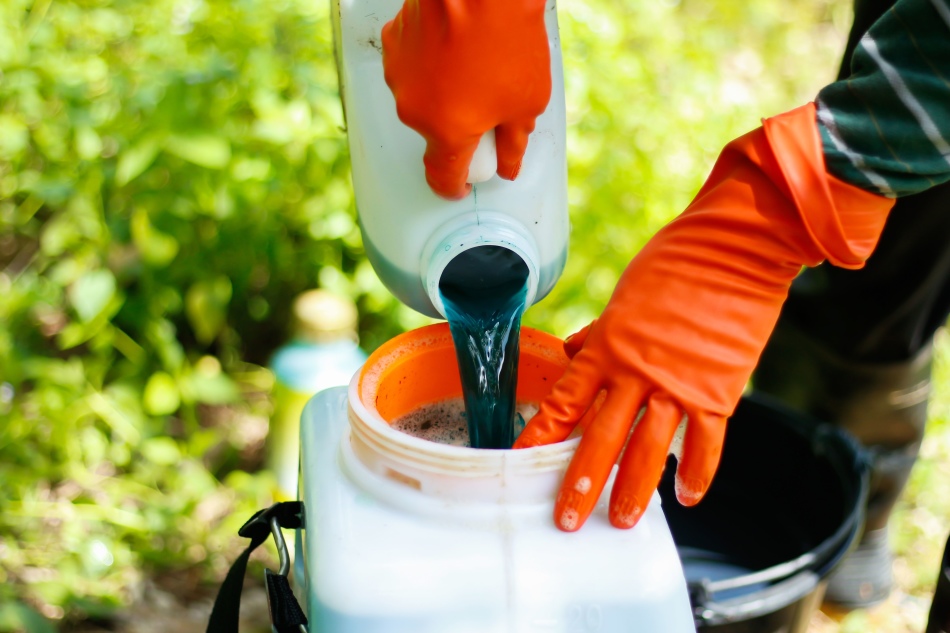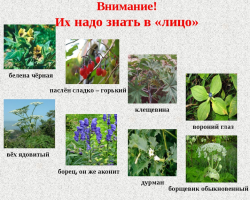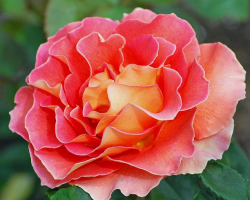A review of folk remedies and industrial drugs for feeding thuja.
Content
- How to feed thuja after planting?
- How and what to feed thuja in the spring?
- Tuya changed color, what to do?
- How to feed the thuja so as not to turn yellow?
- How to feed thuja for growth?
- How to feed thuja in the summer?
- When to feed Tuya in the fall?
- What fertilizer to feed thuja?
- Tui top dressing with folk remedies
- How often to feed thuja?
- How to feed thuja in the summer for rapid growth: reviews
- Video: How to feed the thuja?
Thui is an evergreen, coniferous tree, family of cypress. The homeland of culture is North America, but now there are a lot of artificially bred varieties that grow in almost all corners of the world. In the article we will tell you what to feed Tuya.
How to feed thuja after planting?
One of the most critical stages is the planting of the plant. It depends on the quality, correctness of planting, the tree will grow, or it will die. In addition to the correct choice of seedlings and a place for growth, top dressing is of great importance. The plant loves both organic and mineral top dressing. There are several options for feeding thuja.
Than to feed thuja after planting:
- During the landing, dig a hole, the diameter of which is 1 m, and the depth is 80 cm. Pour a little ash, compost and peat into the prepared recess. These are organic components that will accelerate the growth of the plant, and prevent yellowing.
- In equal quantities, mix the garden land with sand. Sprinkle the fertilizers with the prepared substance a little, pour about 3 liters of water. It is necessary that the water is completely absorbed.
- Now you can make a seedling by transshipment. In no case do not need to remove the remains of land from the roots. Gardeners recommend carrying the seedling by transshipment, without preliminary cleaning of the root system. The turf land is mixed with compost, peat or sand. The number of components should be equal. Pour a hole with this mixture, compact, pour a bucket of water into the place of planting.
Please note that thuja needs frequent watering, so to hold moisture, it is recommended to cover the soil with peat or compost. The mixture is introduced into the trunk circle. Water the plant should be daily until it is rooted in a new place. If the summer is hot, then the young seedling needs to be watered twice a week. If the landing was carried out in the middle strip of Russia, the summer is rainy, then the plant should be watered no more than once in 7 days.

How and what to feed thuja in the spring?
Organic fertilizers that are applied during planting will be enough for 2 years. In order for the tree to quickly begin, the roots are strengthened, it is recommended that you apply one drop of zircon during irrigation at the rate of 1000 ml of water. It activates the growth of the roots, and also increases the seedlings of the seedling. Next, they are fed twice a year. This is necessary during the period of building up new shoots, that is, in early spring, and in the summer.
How and what to feed thuja in the spring:
- In spring, top dressing is carried out in order to obtain young shoots, and strengthen the root system. After all, it is in the spring that life juices begin to move, the plant comes to life, despite the fact that it is evergreen. To activate the appearance of new shoots, it is worth administering complex drugs. Almost all garden crops are fed with nitrogen in the spring.
- However, thuja does not need such a top dressing, and can respond to the introduction of nitrogen yellow, or loss of branches. An ideal option for coniferous culture is the use of dolomite flour, and potassium nitrate. The plant responds well to fertilizer compounds that contain phosphorus. Processing coniferous crops is carried out by complex fertilizers. They contain the necessary components that improve culture growth.
- The drugs are administered in the form of granules. No need to dissolve crystals in water and water a tree. Granuls scatter on loose soil. 2 weeks after feeding, it is worth covering the soil of mulch. To do this, slightly loosen the soil, introduce a little compost, and mix with the soil. The thickness of the layer of compost is 10 cm. It helps to strengthen the root system of the plant, and improve its growth. I recommend many gardeners in March to use growth stimulants, for example, a zircon orEpin. It is believed that they improve the immunity of the plant, and help to cope with diseases. This improvesabsorption roots, they can draw much more nutrients introduced into the soil.

Tuya changed color, what to do?
You should not panic if in early spring you noticed a toui light-salam shoots. These are young sprouts that differ in color. The plant does not get sick, this is a physiological process.
Tuya changed the color, what to do:
- It is worthwhile if the color of the needles changes. If the shade becomes almost white, this indicates a shortage of iron. For the purpose of treatment, applies of iron is used. Prepare a one percent solution, and conduct spraying the crown of the tree. It is impossible to make iron under the root.
- For spraying, a fine sprayer is used. To prevent iron deficiency, spraying twice per season - in March and early summer. However, for this, a 0.5% solution of iron is used.
- If purple ends have formed on the branches, this indicates a deficiency of phosphorus. Top dressing consisting of superphosphate is introduced. Spread 50 g of funds near the trunk circle. After the introduction of fertilizers, fill in the soil and pour the plant well. Solving superphosphate in water and watering roots is not necessary.

How to feed the thuja so as not to turn yellow?
If the thuja has acquired a yellow tint, and in the spring there are very few shoots, then the plant is sick with chlorosis, it lacks nitrogen. To normalize the state of culture, it is worth using ammonia nitrate.
How to feed the thuja so as not to turn yellow:
- Spread 2 tablespoons of the product in the area of \u200b\u200bthe landing circle, fill the soil. Pour the plant with one bucket of water. If the top of the thuja yellows exclusively, this indicates a deficiency of potassium and magnesium. To make up for their shortage, you need to scatter 50 g of means in the area of \u200b\u200bthe trunk circle and mix with the soil. After that, carry out watering. For top dressing is idealkalimagnesia.
- Gardeners do not recommend using fertilizers when yellowing. Culture can turn yellow for several reasons: a disadvantage or excess of moisture, a burn of dog urine, iron or nitrogen deficiency. In the first two cases, it will take time for the plant to return to normal. It is not worth overloading the soil top dressing.

How to feed thuja for growth?
Thui does not need frequent top dressing, it is enough to introduce fertilizer only once a year. Feeding is carried out in early spring, during the renewal of scales. Use compost, which is laid out with a layer of 10 cm and sealed in the soil. If this is a young seedling, then within one or two years after the introduction of activators of the growth of roots and dolomite flour, the culture is not necessary to adapt an additional. If you overdo it with top dressing, thuja will lose its decorative function and stretch out greatly. The shape of the crown will deteriorate, it will be difficult to form, cutting beautiful figures for landscape design.
How to feed the thuja for growth:
- Gardeners recommend fertilizing thuja in the spring, because it is during this period that all signs of a deficiency of various substances become noticeable. In spring, the color of the needles changes, which allows you to assess the condition of the plant.
- In early spring, fertilizer is introduced to wake the tree, and restore it after the cold. Nourishing components activate vegetative processes. It is best to feed in March.
- However, if you missed the period of introduction of fertilizers in the spring, their deficiency can be replenished in the summer. In a hot period, all fertilizers should not be introduced under the root, but to carry out foliar processing. Add nutrients using spraying.

How to feed thuja in the summer?
Optimal root feeding in the summer is not at all considered solutions prepared from complex fertilizers, but a separate administration of the biohumus, or components against fungi.
How to feed thuja in the summer:
- If the needles do not turn yellow, in general, the culture grows well, then it does not need a separate top dressing in the summer. The situation is otherwise if the plant feels bad, the color of the crown has changed, or there is a sharp wilting.
- In this case, top dressing may be needed. Determine the cause of the deterioration of the plant, and eliminate it. In each individual case, the introduction of a specific fertilizer is necessary, depending on the ailment and culture.
- In the summer, dolomite flour, compost, andspecial fertilizers, Designed for coniferous plants.

When to feed Tuya in the fall?
Tui processing in the fall is not carried out in all regions, but only in the southern regions. During this period, it is recommended to fertilize under the root. Their main purpose is to improve the growth of greenery. The optimal period of fertilizer administration is considered September or October.
When to feed Tuya in the fall:
- In the autumn, it is worth stopping the use of mineral and organic fertilizers. Late stimulation adversely affects the wintering of plants.
- During top dressing, a large number of new shoots may form that will not survive the winter. The plant will lose vitality and energy, and will downs in the early spring.
- The day before the use of complex fertilizers, it is worth watering the culture with water. This is necessary to moisturize and better assimilation of fertilizers.
- Remember, you can not add top dressing in dry soil.
Try to alternate mineral complexes. If they contain the same component, this can lead to diseases and an excess.

What fertilizer to feed thuja?
Most modern gardeners rarely use compost, because it takes time to prepare it. The alternative is industrial components, made of organic components.
What fertilizer to feed thuja:
- Biud. The drug is developed based on excrement of cattle, and translated into components that are easily absorbed.
- Khumit eco. The drug is made of biohumus, which helps to improve autonomic processes, and awakens the plant after winter hibernation. Mineral fertilizers are required for conifers, which contain a lot of potassium, magnesium and phosphorus.
- Limit the consumption of a high nitrogen content. They are not suitable for feeding thuja. But with yellowing needles, such drugs will help eliminate starvation, and make up for the feed deficiency. it urea and ammonia nitrate, nitroammofosk. They are introduced in granular form. Dry top dressing allow neutralize the shortage of elements during the loosening of the soil. They are introduced in the form of granules, and closed into the soil.
- Experts use complexes that contain all the necessary nutrient trace elements. They contain a large amount of phosphorus, magnesium, potassium, and organic components may be present. Among them it is worth highlighting Zdraven, Aqua, green needle or needle.

Tui top dressing with folk remedies
Gardeners are often striving to cope with their own, so they use folk recipes. Such top dressing is made of herbs.
Tui top dressing with folk remedies:
- The solutions are prepared on the basis of clover, nettles and dandelion. Choose plants without seeds. Finely chopped grass is put in a barrel of plastic and filled with 2/3 of the volume. Water is poured, ammonium nitrate or urea is added.
- On average, 250 g of the product is needed by 50 liters of solution. Cover the container with a lid or wrap with polyethylene by making a hole for gas output. Set the barrel for about a week and a half in the sun.
- Do not forget to mix periodically. Herbal substance becomes dark brown. It is impossible to water the plants, the solution is diluted in a proportion of 1:10, foliar processing is carried out. The crown of wood is sprayed with this solution.
- The yeast has proven themselves well, as they contain amino acids, and trace elements. To obtain a nutrient solution, it is necessary to dilute 35 g of dry yeast, 50 g of sugar in a liter of water. This solution is placed in a warm place. After ending the fermentation process, you need to select a tablespoon of concentrate, pour in 10 liters of water. FROMfill out the intervals and make fertilizers with breaks of 2 weeks.

How often to feed thuja?
As indicated above, thuja needs root top dressing only once a year. This does not apply to foliar processing.
How often to feed thuja:
- Experts recommend holding about 3-4 spraying the crown during the season. The ideal time for introducing fertilizers on the crown is from May to August.
- Typically, metals compounds are used for these purposes. These include Brexil, kaf,Kvatum.
- Epin And the zircon is used only if the thuja grows in adverse conditions.
- Such drugs are used during planting to accelerate the adaptation of the plant in a new place.

How to feed thuja in the summer for rapid growth: reviews
Below you can familiarize yourself with the reviews of gardeners, which are grown in the personal plots of thuja.
How to feed thuja in the summer for rapid growth, reviews:
Vladimir. I use thuja as a hedge, so I practice frequent top dressing. I spend processing fertilizers twice per season: in early spring and at the end of summer. I try not to carry out processing in the winter, as this can contribute to the wilting of the plant. I use the complex preparation of a needle. The quality suits, but this year the product worked badly. I think it's time to change complex fertilizer. The neighbor said that the plants are used to fertilizers, there is an excess of some components. I plan to purchase another complex fertilizer. Fortunately, now there are a lot of drugs in garden centers.
Alexandra. I purchased Tuya two years ago, made fertilizer during planting. After that, I did not water the tree with fertilizers, but used a sprayer. For processing, I used a kaf. During the landing, I used Epin so that the plant would take root faster.
Yuri. I grow thuja in the country, there is a river nearby, so the humidity is high. In such conditions, the tree grows well. He planted 3 years ago, brought compost under the root, and dolomite flour. I did not use any feeds for the growth of roots. In the summer he was processed with a complex fertilizer, which he purchased in a garden store. I do not add additional fertilizers, thuja and grows so well. It increased significantly in size, and acquired a magnificent crown. I am very pleased, I think this is an ideal plant for creating a shadow on the site. He landed along the fence, imitating a hedge. The fence at the dacha is wooden, I wanted to compact it, so I planted a thuja. One of them was located near the gazebo. The shadows from it are a little, but the smell is very pleasant, the tree significantly improves the landscape, decorating it.

Do you like to grow plants at home? Then we advise you to read the following articles from which you will learn how to grow:
Gardeners are recommended to be fed with compost, which is introduced into the area of \u200b\u200bthe trunk circle. It is recommended to use ash, Toya loves alkaline soil. It is necessary to dilute the liter jar of ash in a bucket of water and knead the infusion of mullein. Mineral complexes for conifers are used.







